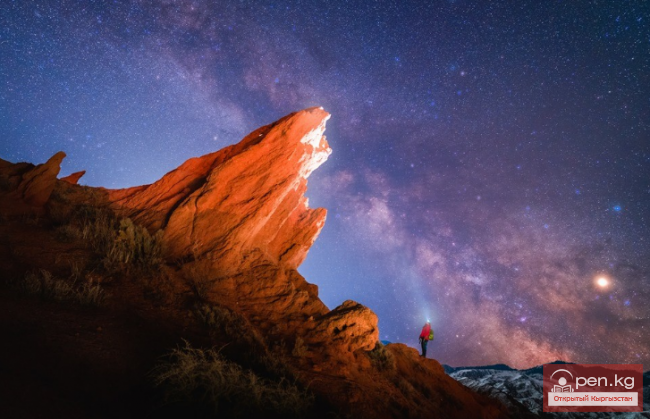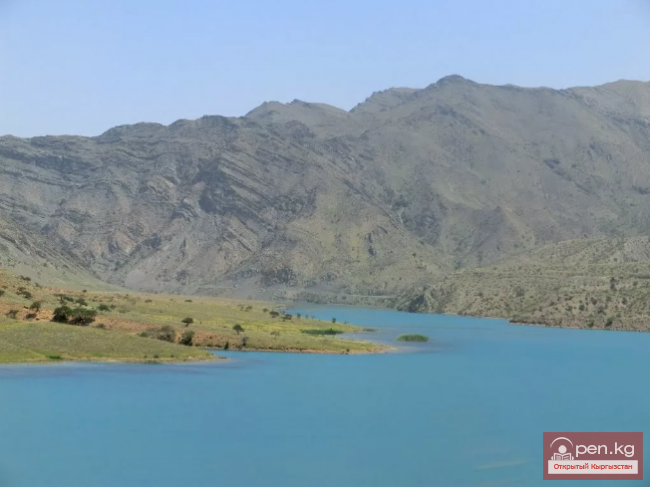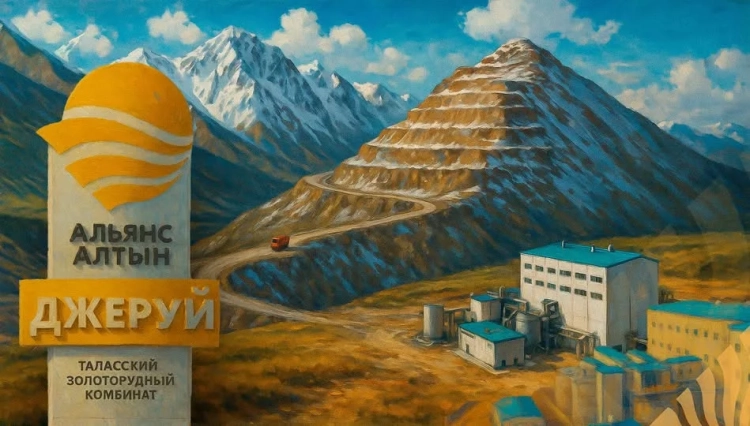
Coal deposits in the republic are grouped into 4 basins (Southern Fergana, Uzgen, Northern...

Kumtor Deposit is a unique site developed by the Canadian company "Centerra Gold Inc.",...

The territory of the republic has discovered deposits of coal, gas, and oil. Among them, coal...

Oil and gas are primarily found along the borders of the Fergana Basin. To date, seven oil fields,...

People's Experience in Using Natural Resources. The republic has reserves of fossil fuels,...

Therapeutic Resources of Kyrgyzstan Currently, more than 120 natural mineral water springs have...

The Chatyr-Kul Deposit has the largest resources of carbonated water in Kyrgyzstan: they are...

Gypsum reserves are accounted for in six deposits, and extraction is carried out by small...

Mineral Resources of the Republic of Kyrgyzstan The subsoil of Kyrgyzstan is truly a gigantic...

Ferrous metals: iron, manganese, vanadium. Non-ferrous metals: aluminum, tungsten, tin, mercury,...

Water is essential for electricity production: over 90% of the electricity for household...

Albert Dros — "I recently discovered Kyrgyzstan" Photographer from the Netherlands —...

The Republic has a significant amount of diverse fuel and energy resources. Involving them in...

The main landscape of Kyrgyzstan consists of mountains. Enclosed mountain valleys are surrounded...

Kyrgyzstan has deep traditions in the exploration of mineral resources. As early as the beginning...

Issyk-Ata Deposit is located 78 km southeast of Bishkek in the middle part of the picturesque...

The traces of ancient mining operations in the territory of Kyrgyzstan indicate that mercury,...

Reproduction In order to reproduce the fish stocks of Lake Issyk-Kul and Son-Kul, 750,000 pieces...

Kara-Shoro Deposit includes 3 areas of carbonated mineral water distribution — namely Kara-Shoro...

The forge of the zergers. Mid-19th century. The photo is kept in the State Historical Museum...

All elements and conditions, as well as phenomena and bodies of nature, can be used in public...

Pelad The pelad was brought to Kyrgyzstan from Lake Sevan and released into the lakes Issyk-Kul...

Kasansay (Kyrgyz: Kasan-say, Uzbek: Kosonsoy) A river in Kyrgyzstan and Uzbekistan, a right...

Even during the time of the Kokand Khanate, the wealth of the subsoil of Kyrgyzstan was well...

River Tributaries The existence of powerful glacial nodes, large areas occupied by snowfields, and...

KAZAKHSTAN. Republic of Kazakhstan A state in the center of Eurasia. Area - 2,724.9 thousand km²....

The Aksu mineral water deposit is the most intensively exploited deposit of therapeutic table...

“Chatyr-Kul” translates from Kyrgyz as “Heavenly Lake.” The high-altitude lake Chatyr-Kul is...

Of all the gases found on Earth, radon is the rarest and most expensive, although it is difficult...

UNFORGETTABLE VACATION AT THE AIKOL REST HOUSE Incredibly cozy and homely, the Aikol Rest House is...

Geographical information: Chatyr-Kul (Chatyr-Köl) is a closed lake in the Central Tien Shan,...

The Aksu Deposit is located in Eastern Prissykul, 15 km southeast of the town of Krakal, in the...
Issyk-Kul - the Mountain Pearl. The most beautiful and largest lake in Central Asia is Lake...

In the territory of Kyrgyzstan, there are 750 lakes, reservoirs, and small ponds with a total area...

Rishtan Deposit is located 15 km south of the city of Rishtan in Uzbekistan and 20 km east of the...

Water resources are vital for the economy, humans, and the environment; they are the most...

As a result of non-tectonic movements, intermountain depressions and mountain uplifts were formed....

The carbonated water of Kara-Kiche is the most sulfate-rich among the carbonated mineral waters of...

Every year, fry of the Issyk-Kul marinka and the naked osman are released into the lake....

Resilient Residents of Kopuro-Bazar Kopuro-Bazar village is located in the Talas region, on the...

Since the beginning of the development of the "Djeruy" deposit in 2015, "Alliance...

Kacharaltur Area is located on the same left bank of the Yassy River as Kara-Shoro, but 200 meters...

OMAN. Sultanate of Oman A country in Southwest Asia, in the southeast of the Arabian Peninsula....
- From January to August 2025, Kyrgyzstan registered a decrease in oil and natural gas production...

The Kyrgyz Republic is a mountainous country (average altitude 2750 m above sea level), located in...

Ak-Talaa includes the valleys of the Ala-Buka, Arpa, and Terek rivers, as well as the southern...

Asanaliev Usengazy (1934-1996), Doctor of Geological and Mineral Sciences (1971), Academician of...

KazarMan – a village in central Kyrgyzstan, the administrative center of the Toguz-Toro district....